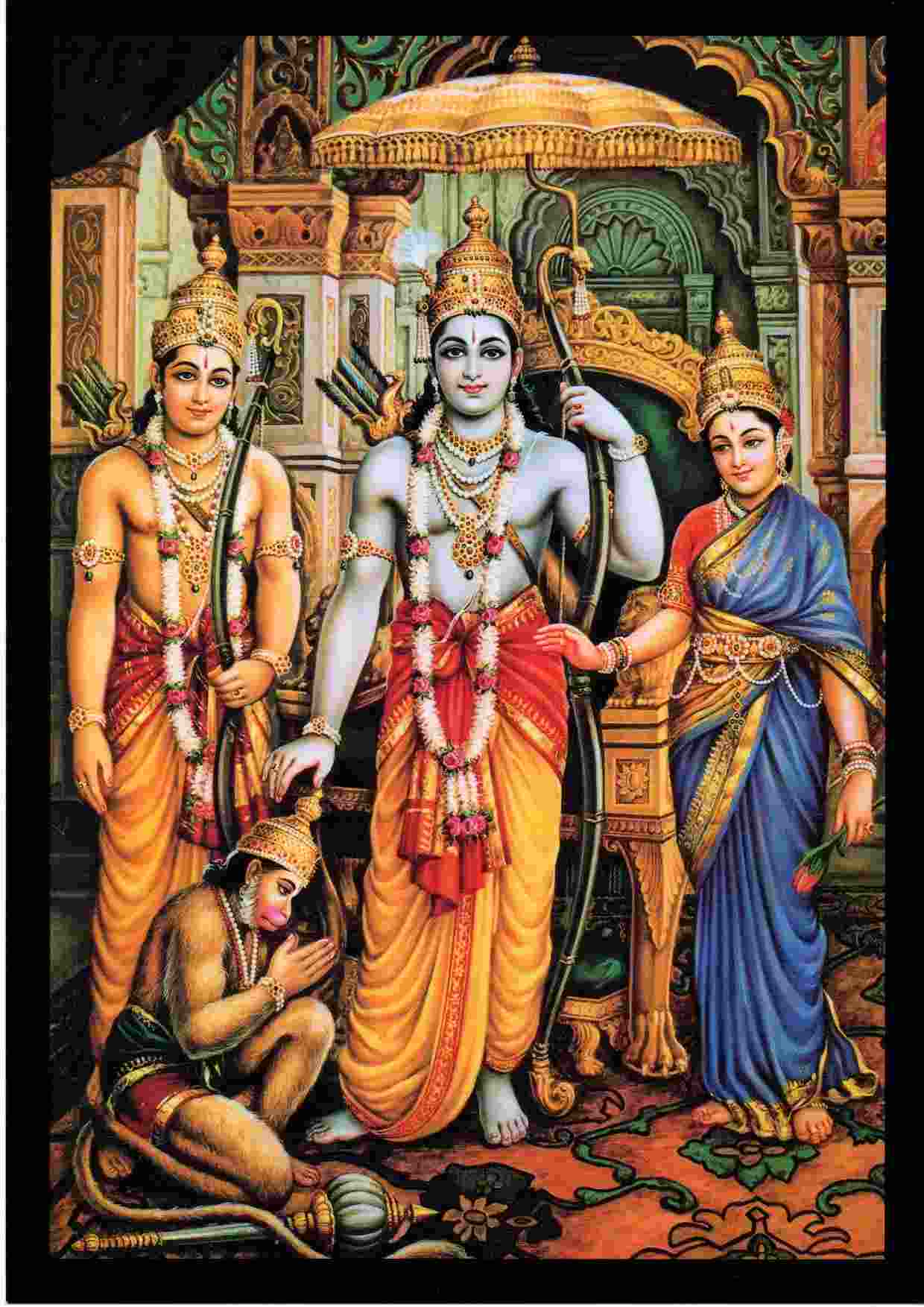Sri Raamachandrah aashrita aaarijatah
samasta kalyaanagunaabhiraamah |
seetaamukhaambhoruha chanchareekah
nirantaram mangalamaathanothu ||
""May Sri Ramachandra, the refuge, resembling the celestial Paarijata tree,
delightful with all auspicious qualities,
who is the reason for the delight on the face of Sita -
continuously brings auspiciousness.""

The Vedas are the foundation of Bharat’s eternal culture and traditions. They are books of wisdom which are not written by man, in that, they are impersonal writings which depict the various truths of nature. These impersonal truths of nature have been written down by the ancient Rishis as the Vedas. The truths which have been recorded in the Vedas are eternal, permanent, deep and profound. They contain many scriptural secrets.
The Rishis went a step further. After performing great tapas (austerities), they composed additional texts such as the Upanishads, Brahmanas, Aranyakas and Itihasas. They did this so that the ordinary human beings could understand the import of the Vedas. Among these compositions, the Puranas present this wisdom in an easily understandable manner. The Upanishads, Puranas and the Itihasas have a “Chandas” (meter and rhythm) embedded within them. Each Chandas hints at a specific occult eternal secret hidden within the Vedas. In this manner, every Upanishad has a message embedded within it.
The Sri Ramayana holds an exalted position among these scriptures. The Ramayana is at once both an Itihasa and Purana. All the scriptures produced in ancient Bharat are historical treatises which depict events as they happened in the past (they are not “mythological”). The recollection of a past historical event which holds true for any era and any race on Earth is considered to be in a Purana.
The Ramayana is considered to be the “Adi Kavya” (the first poem). The Gayatri Chandas which consists of 24 letters is given within it. The Kings of the Surya Vamsha (solar dynasty) are the solar intelligences who descended to Earth along with the rays of the Sun to reveal the Sun’s splendour. The story of Rama who is a descendent of the Raghu Vamsa (the clan of Raghu) provides such details.
How long with the story of Rama exist on Earth? The answer is, until the Earth exists. Despite innumerable attempts to grow poisonous weeds around the story of Sri Rama, they are unable to touch it as the Ramayana is an eternal Truth.
The Ramayana has been composed in six Kandas or chapters. Each chapter describes the splendour of a particular season. Rama, the “Nilamegha” or dark storm cloud, rains on Sita (the Earth), thereby producing the offspring Lava and Kusha who represent the grain which sprouts on Earth as a result. This entire cycle embodies a Yagna or sacrifice which repeats every year.
A family household or village where the Ramayana is recited will always flourish and enjoy abundance. Rama is born in the heart of every spiritual aspirant every year in the lunar month of Chaitra as the son of Dasaratha and the destroyer of Dasa Kanthaka (Ravana – the ten headed one).
Ravana like people are born every year who seek to destroy both the Earth’s natural resources as well as their fellow beings. Daasarathi (Rama) continually protects and nourishes humanity from such individuals.
This is an eternal truth.
Sri Raama Raama Raameti Rame Raame Manorame | Sahasranaama Tattulyam Raama Naama Varaanane ||